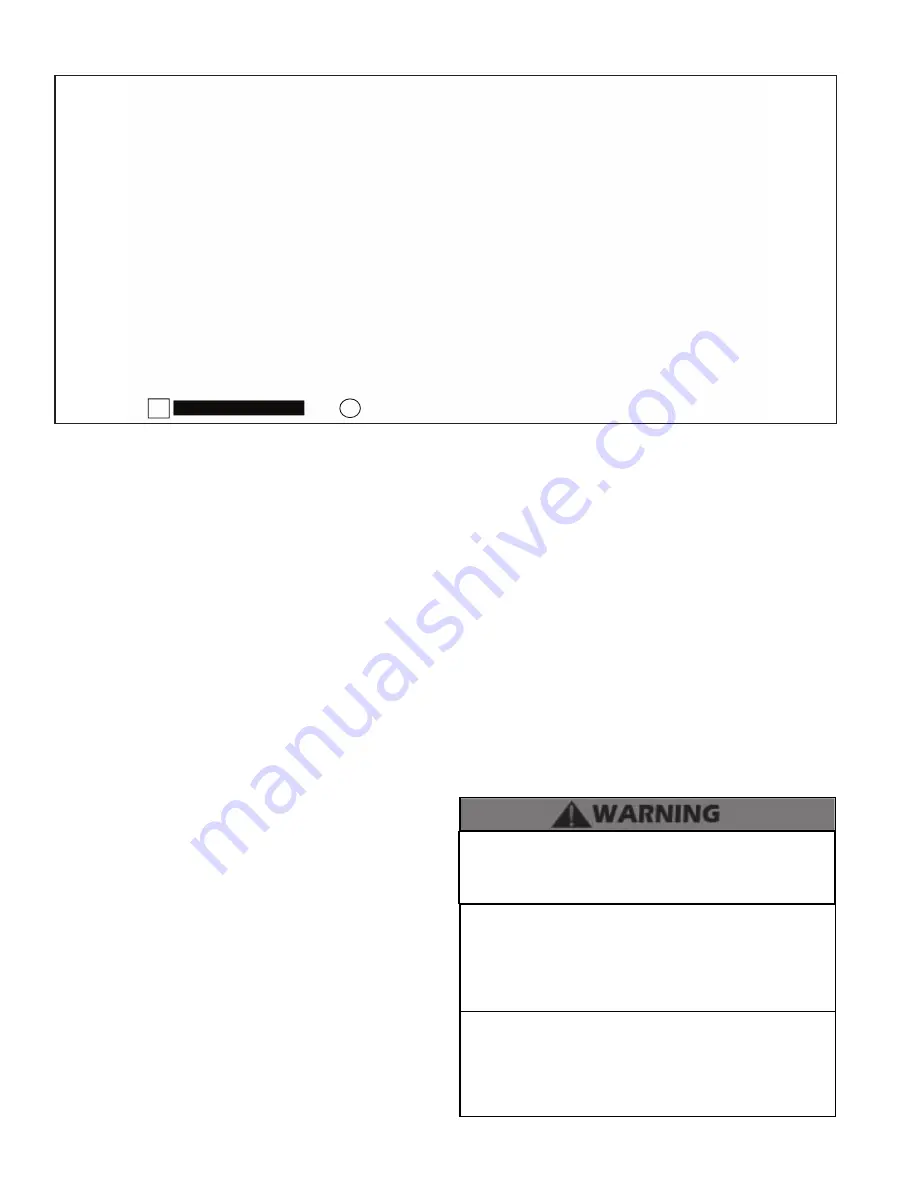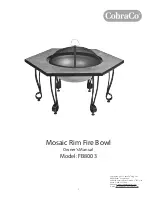
LP-446-r4 Rev. 10.12.16
24
D. Exhaust Vent and Intake Pipe Location
DETERMINE EXHAUST VENT AND INTAKE PIPE LOCATION –
NOTES:
INSTALLATIONS IN THE UNITED STATES
A.
Provide a minimum of 1 foot clearance from the bottom of the
exhaust vent and intake pipe above the expected snow accumulation
level. Snow removal may be necessary to maintain clearance.
B.
Provide a minimum of 1 foot distance from exhaust vent termination
to any door, operable window, or gravity intake into any building.
C.
Provide a minimum of 1 foot distance from exhaust vent termination
to any permanently closed door or window.
D.
Provide a minimum of 4 feet vertical clearance from the exhaust
vent to all roof overhangs.
E.
Locating exhaust vent termination near roof overhangs will result in
the formation of icicles in freezing weather, and could result in blockage
of the exhaust vent. To prevent icicles from forming, maintain 4 feet
vertical clearance from the exhaust vent to all roof overhangs.
F.
Provide 4 feet clearance from the outside corner of vertical walls,
chimneys, etc., as well as horizontal corners created by roof overhangs.
G.
Provide 6 feet clearance from the inside corner of vertical walls,
chimneys, etc., as well as horizontal corners created by roof overhangs.
H.
Provide 4 feet clearance from center line within a height of 15 feet
above electrical meters, gas meters, gas regulators, relief equipment,
exhaust fans and inlets.
I.
Provide 4 feet horizontal clearance from electrical meters, gas
meters, gas regulators, relief equipment, exhaust fans and inlets. In
no case shall the exit terminal be above or below the aforementioned
equipment unless the 4 foot horizontal distance is maintained.
J.
This boiler vent system shall terminate at least 3 feet (0.9 m) above
any forced air intake located within 10 ft (3 m).
NOTE:
This does not apply to the combustion air intake of a direct-vent
appliance.
K.
When venting with a two pipe system, maximum distance between
exhaust vent and intake pipe is 6 feet (1.8 m). Minimum d i s t a n c e
between exhaust vent and intake pipe on single direct vented appliance
is 10” (0.255 m) center-to-center. Minimum distance between exhaust
vents and intake pipes on multiple boilers is 10” (0.255 m) center-to-
center.
L.
When adjacent to a public walkway, locate exit terminal at least 7
feet above grade.
In addition:
•
Total length of vent piping shall not exceed the limits specified
in this manual.
•
The vent piping for this direct vented appliance is approved
for zero clearance to combustible construction.
•
The flue products coming from the exhaust vent will create a
large plume when the boiler is in operation. Avoid venting in
areas that will affect neighboring buildings or be considered
objectionable.
•
DO NOT locate exhaust vent or intake pipe in a parking area
where machinery may damage the pipe.
•
DO NOT locate the exhaust vent or intake pipe terminals
under a porch, balcony, or veranda.
•
Avoid terminating exhaust vents near shrubs, air conditioners,
or other objects that will obstruct the exhaust stream.
•
DO NOT vent over a public walkway. Condensate could drip
or freeze and create a nuisance or hazard.
•
NOTE:
Due to potential moisture build-up, sidewall venting
may not be the preferred venting option. Carefully consider
venting installation and location to save time and cost.
INSTALLATIONS IN CANADA
NOTE:
Canadian installation must comply with the CAN/CSA B149.1
code and applicable local codes and supersede the restrictions for
the United States outlined in this section.
The building owner is responsible for keeping the exhaust
and intake terminations free of snow, ice, or other potential
blockages, as well as scheduling routing maintenance. Failure
to keep the vent piping terminations clear and properly
maintain the boiler could result in property damage, severe
personal injury, or death.
For each floor containing bedroom(s), a carbon monoxide
detector and alarm shall be placed in the living area outside
the bedrooms, as well as in the room that houses the boiler.
Detectors and alarms shall comply with NFPA 720 (latest
edition). Failure to comply with these requirements could
result in product damage, severe personal injury, or death.
Figure 13 - Exit Terminals for Direct Vent Systems - ANSI Z223.1 / NFPA 54 for US and CAN/CSA B149.1 for Canada
It is required to insert exhaust and intake screens into the vent
terminations to prevent blockage caused by debris or birds.
Failure to keep terminations clear could result in property
damage, severe personal injury, or death.
Summary of Contents for MODCON500
Page 35: ...LP 446 r4 Rev 10 12 16 35 Figure 29 Cascade Master and FollowerWiring...
Page 57: ...LP 446 r4 Rev 10 12 16 57 Figure 35 500 Model Combustion System Replacement Parts...
Page 58: ...LP 446 r4 Rev 10 12 16 58 Figure 36 700 850 Models Combustion System Replacement Parts...
Page 60: ...LP 446 r4 Rev 10 12 16 60 Figure 38 Cabinet Replacement Parts All Models...
















































